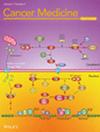A Population-Based Study of Infectious Diseases Mortality Risk in Patients With Hematologic Malignancies 2000–2020
Abstract
Background
Patients with hematologic malignancies are at high risk of dying from infectious diseases. However, little attention has been paid to infectious diseases mortality (IDM) in these patients. The aim of our study is to determine the incidence and trends of IDM in patients with hematologic malignancies, identify risk factors associated with IDM, and compare the risk of IDM in patients with the general United States population.
Methods
The data of patients with hematologic malignancies between 2000 and 2020 was retrieved from the Surveillance, Epidemiology, and End Results program. Standardized mortality ratios (SMRs) and IDM rates were calculated. A competing risk model was performed to identify potential risk factors of IDM.
Results
Among 700,678 patients, 15,028 IDM were identified with an IDM rate of 401.31/100,000 person-years. Compared with the general population, the SMR of IDM was 3.34, and the elevated risk of IDM ran through the follow-up period. For all cancer subtypes, the IDM rates were highest in the first 2 months after diagnosis and gradually declined thereafter. For all patients, the early period of diagnosis, older age, male, non-Hispanic black, single or divorced/separated/widowed status, no chemotherapy, and no radiation were risk factors for IDM. For patients with Hodgkin lymphoma or non-Hodgkin lymphoma, advanced stage was also a risk factor for IDM.
Conclusion
Given the high risk of IDM in patients with hematologic malignancies, it is extremely important to identify patients at high risk of IDM and provide timely intervention to prevent early death from infections and improve prognosis.


 求助内容:
求助内容: 应助结果提醒方式:
应助结果提醒方式:


